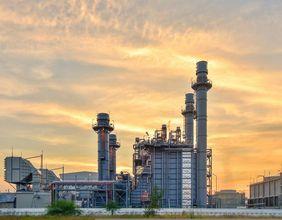Headlines
- Tesla's Stock Rebound and Key Developments
- Impact of Q2 Earnings on Tesla's Future
- Positive and Negative Takeaways from Q2 Report
Tesla's Stock Rebound and Key Developments
Over the past month, Tesla's (NASDAQ:TSLA) stock has experienced a robust rebound, surging by more than 18%. This upswing can be linked to growing optimism surrounding several pivotal developments within the company. Among these are the potential introduction of Robotaxi services, the anticipated launch of a more affordable electric vehicle (EV) model, and significant progress in Full Self-Driving (FSD) technology. These advancements have captured the attention of market participants, fueling renewed confidence in Tesla's future prospects.
Impact of Q2 Earnings on Tesla's Future
However, the recent release of Tesla’s second-quarter (Q2) earnings report has introduced a more cautious outlook. Despite a promising start to the fiscal year with favorable Q1 earnings, Tesla's Q2 performance did not meet expectations. The company reported adjusted earnings of $0.52 per share, falling short of the forecasted $0.61 and significantly lower than the previous year's Q2 earnings of $0.91 per share. Total revenue saw a modest year-over-year increase of 2%, reaching $25.5 billion. This growth was largely driven by the Energy Generation and Storage business and higher regulatory credit revenue. However, these gains were offset by a reduction in average selling prices and a decline in vehicle deliveries.
Tesla's adjusted EBITDA margin also declined, dropping to 14.4% in Q2 from 18.7% in the same period the previous year. This sequential decline of about 150 basis points is a cause for concern regarding the company's profitability. With the auto business facing challenges and margins under pressure, it is crucial to examine the factors that will shape Tesla's stock trajectory moving forward, especially within the broader category of consumer stocks.
Positive and Negative Takeaways from Q2 Report
On the positive side, Tesla's Energy Storage division continues to excel. The company set a record in Q2 with 9.4 GWh of deployments, leading to unprecedented revenues and gross profits for this segment. Increased production at its U.S. factory and the ongoing construction of the Megapack factory in China position Tesla to potentially double its output. The strong backlog in the Energy Storage business is expected to support revenue growth in the upcoming quarters.
In addition to the strength in its Energy business, Tesla saw a sequential rebound in vehicle deliveries in Q2. Improved consumer sentiment and attractive financing options played key roles in countering the effects of high interest rates. Moreover, Tesla's management highlighted a global increase in EV penetration, with EVs steadily gaining market share from internal combustion engine (ICE) vehicles.
Tesla also made significant progress in its AI initiatives during Q2, although specific details were scarce. The company reduced the price of FSD (Supervised) in North America and offered free trials to customers equipped with the necessary hardware. These initiatives have shown success and are expected to boost FSD adoption rates as the technology improves and its benefits become more widely recognized.
Furthermore, Tesla remains committed to reducing costs, including lowering the cost of goods sold (COGS) per vehicle and accelerating the development of AI-enabled products and services. While the timing of the Robotaxi launch depends on technological advancements and regulatory approval, Tesla is actively pursuing this opportunity, recognizing its significant growth potential.
Conversely, Tesla's core auto business faces considerable challenges. Demand remains weak due to high interest rates and increased competition. Revenue per unit is likely to remain under pressure as the company offers discounts and competitive financing rates to stimulate sales, which will continue to impact margins and overall profitability.
Tesla's traditionally high industry margins have supported its premium valuation. However, the margin gap between Tesla and its competitors is narrowing, with lower sales volumes and pricing pressures expected to further close this gap. This trend poses a challenge to justifying Tesla's high valuation.
During the Q2 earnings call, Tesla's management emphasized ambitious projects like Robotaxis and the Optimus project, which are several years away from significantly impacting financials. This focus on long-term plans raises concerns about the company's immediate growth prospects. Additionally, recent tests of its autonomous driving software by Truist Securities highlighted notable shortcomings, casting doubt on Tesla's leadership in the field of autonomy.





